Toronto Distillery District
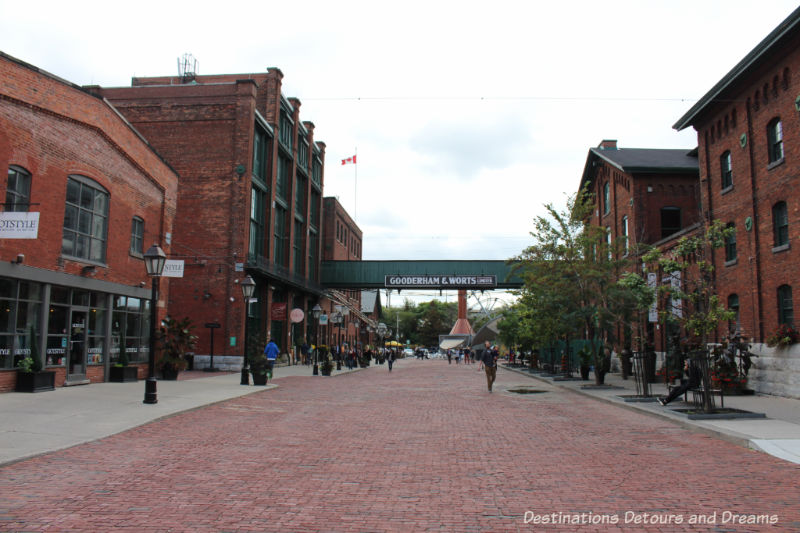
A Victorian industrial site in Toronto, Ontario
is now an arts, culture, and entertainment destination
The Distillery Historic District in Toronto, Ontario opened in 2003. It is a former Victorian industrial site transformed into a “village” of one-of-a-kind shops, galleries and art studios, restaurants, cafés, and theatres. The 13-acre complex of 30 brick and stone buildings is a National Historic Site of Canada.
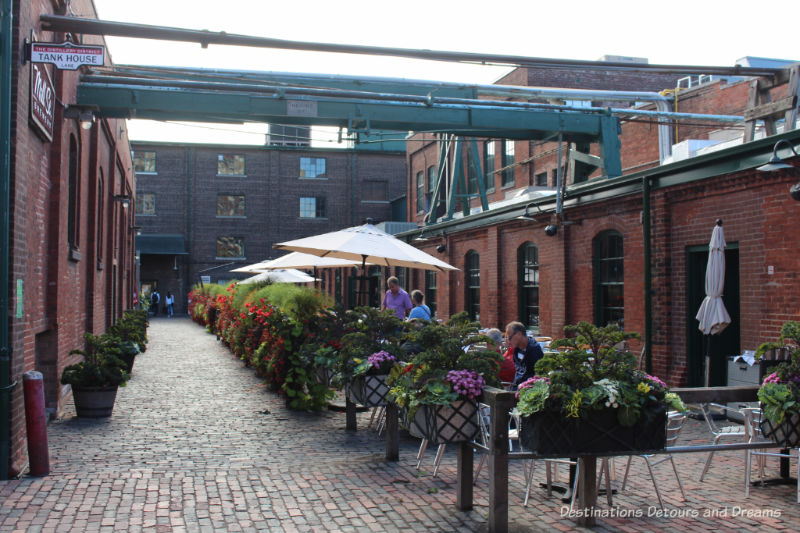
In 1832, brothers-in-law James Wort and William Gooderham erected a grist mill with a 70-foot brick windmill. In 1837, they built a still to convert surplus grain from the mill into whiskey. Exploiting new technology and commercial opportunities, their company Gooderham & Worts Limited grew steadily. A large stone distillery was erected between 1859 and 1861. A brick malthouse, kilns, warehouse, shops and offices were added in following years, all before 1900.
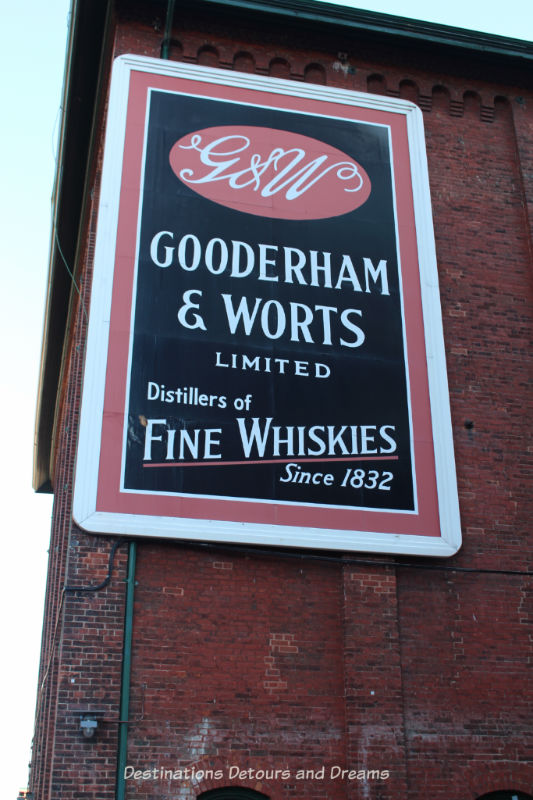
Change came with World War I and the passage of Ontario prohibition legislation in 1916. The Gooderhams allowed the British government to use the distillery to produce acetone and ketone, used in making explosives. After the war, when prohibition was not lifted, they sold the distillery to Harry C. Hatch. In 1920, the Canadian government granted the distillery the right to “denature” alcohol (render it undrinkable by adding chemicals) for industrial use in products such as antifreeze, window washing fluids, solvents, and varnish.
During Word War I, most Canadian provinces enacted prohibition laws. Most provinces repealed their prohibition laws in the early 1920s. It was not until 1927 that prohibition ended in Ontario. In 1927 Hatch and his associates acquired Hiram Walker’s & Sons, creating Hiram Walker-Gooderham & Worts. Hiram Walker’s Windsor plant along the U.S. border got most of the company’s business. American prohibition was still in effect and would remain so until 1933. Gradually, production at the Toronto distillery was cut back. The last whiskey was made in 1957. Rum and industrial alcohol became the plant’s main products. In 1987, Hiram Walker-Gooderham & Worts was acquired by Allied Vintners. In 1990, the site closed down. It was abandoned and became derelict while the future of the property was debated and heritage reports were commissioned.
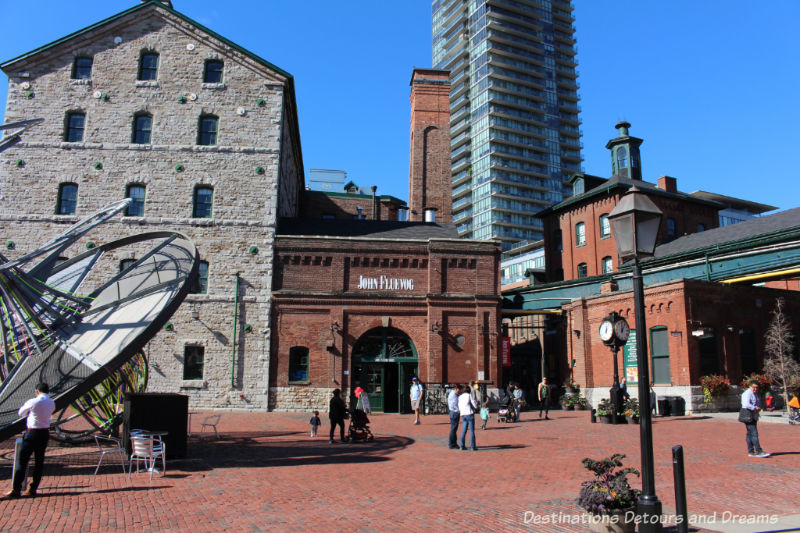
Today, the brick buildings house shops, galleries, and restaurants offering a range of dining experiences that include comfort food, ice creams, coffee, French fusion, Japanese, Mexican, and seafood. Wide cobblestone walkways offer room for public art and patios.
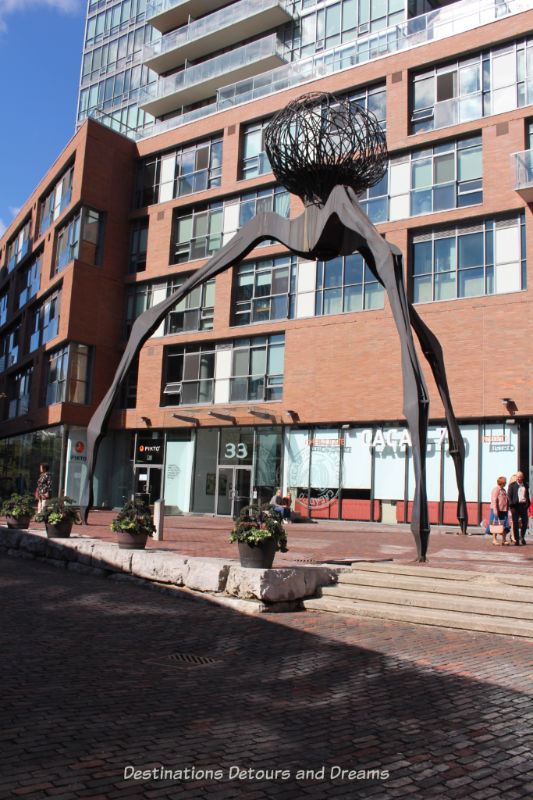
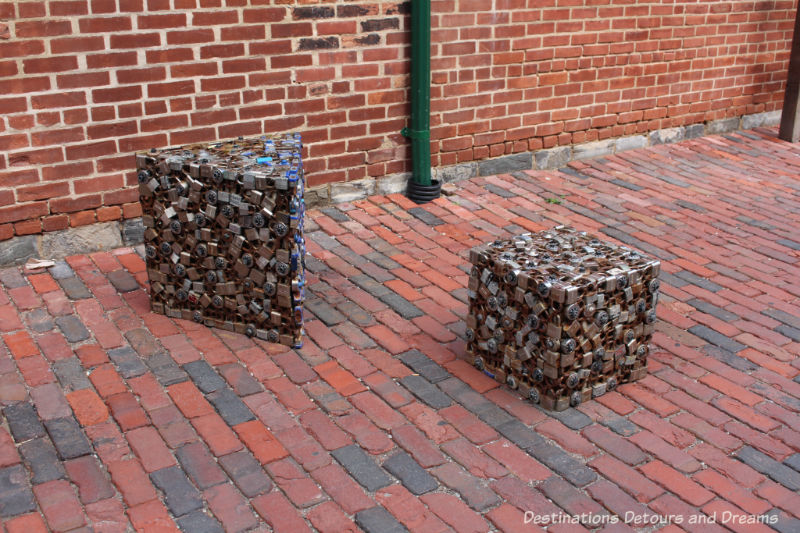
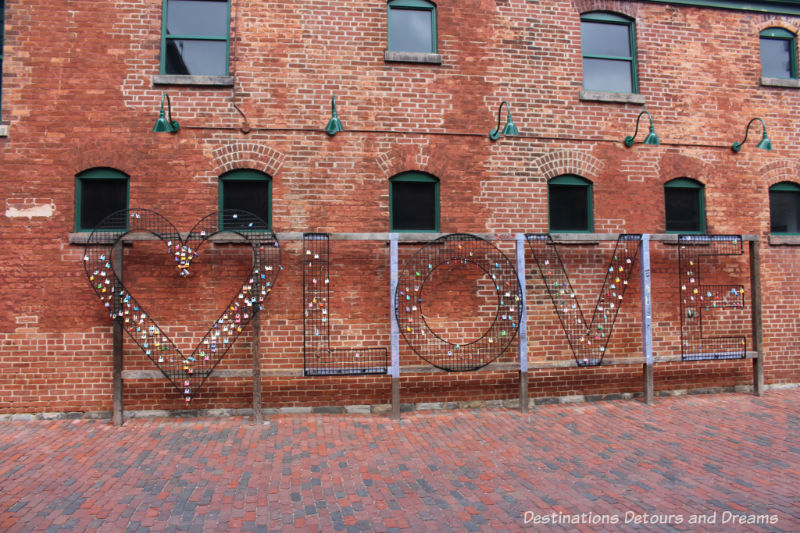
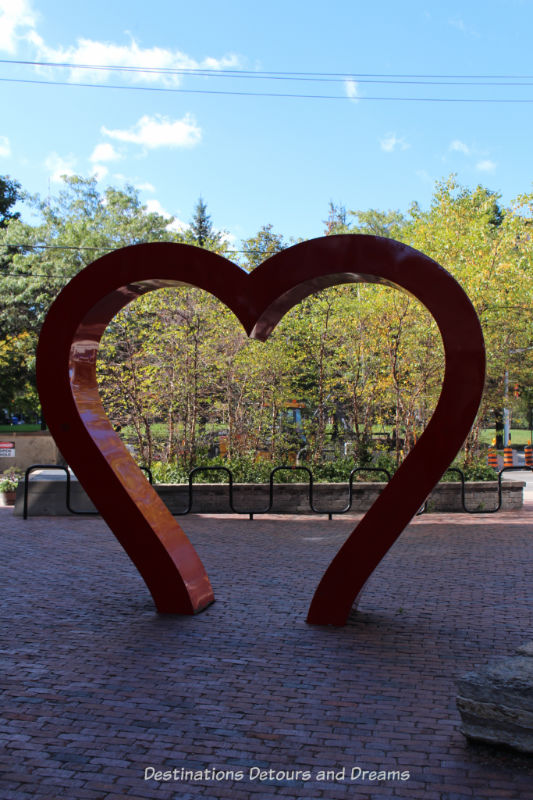
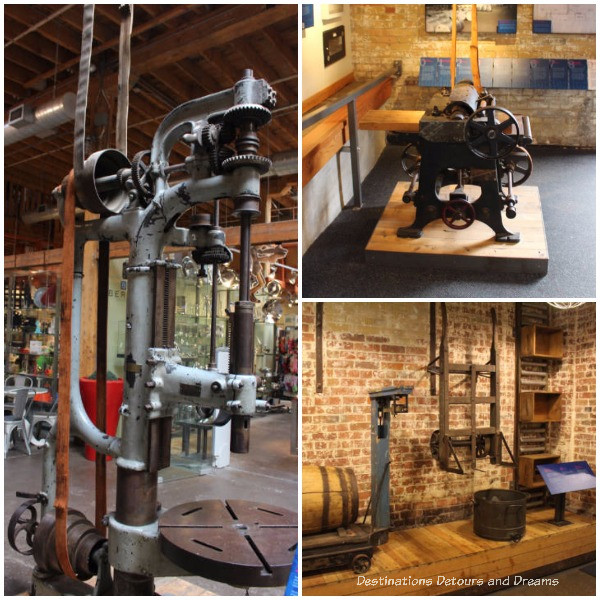
The history of the site is not forgotten in its modern use. Displays throughout the various buildings showcase artifacts and describe processes used. The distillery employed its own coppersmiths to create a wide range of items and parts in-house.
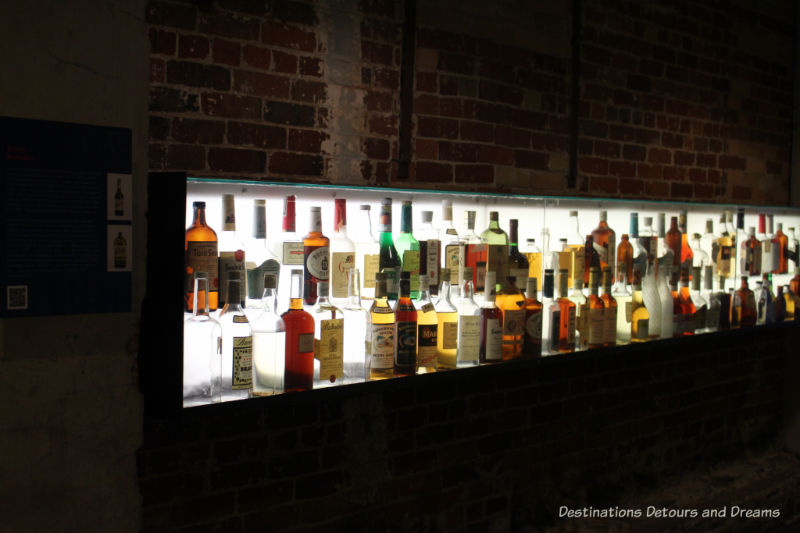
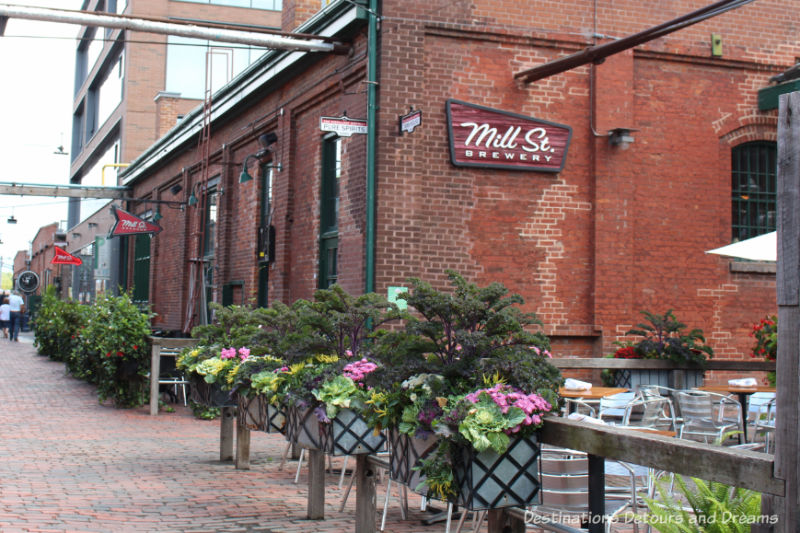
And brewing still occurs on the site. Mill St. Brewery, a craft beer microbrewery, is located in the district and offers daily tours. The Ontario Spring Water Sake Company follows traditional Japanese methods to make sake. A recent addition to the District is the Spirit of York Distillery, which makes vodka and gin in what was once the Gooderham & Worts malting room. A glass wall between the tasting lounge and the distillery allows visitors to view the distilling process.
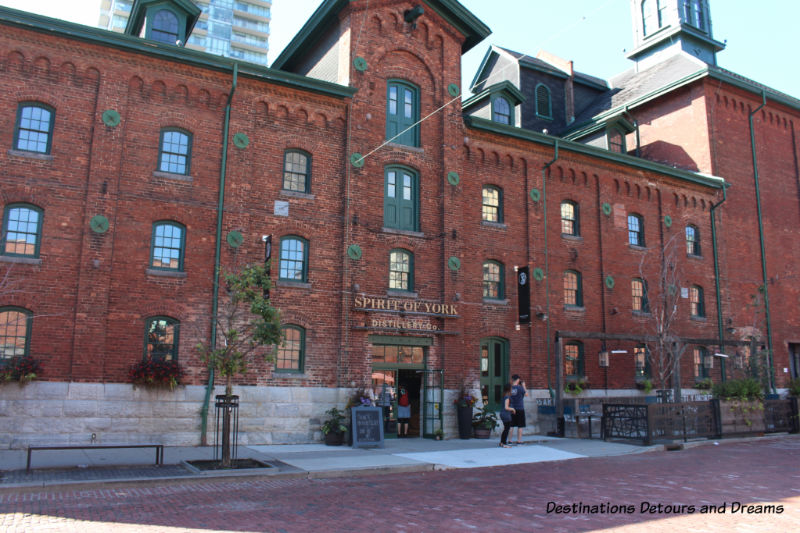
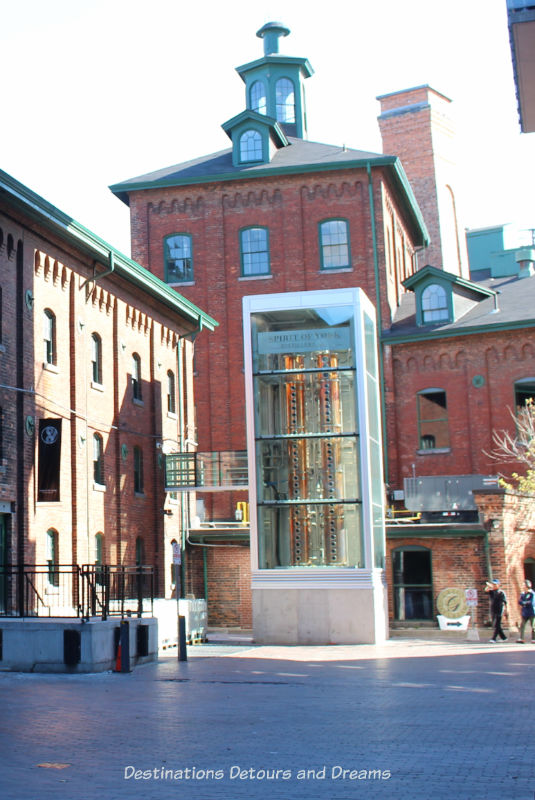
The Distillery Historic District is located just south of Toronto’s downtown core and north of the Gardner Expressway on Mill Street between Parliament and Cherry Street. The area is a good destination for spending a few pleasant hours browsing shops or galleries, dining or enjoying a drink or coffee with friends.
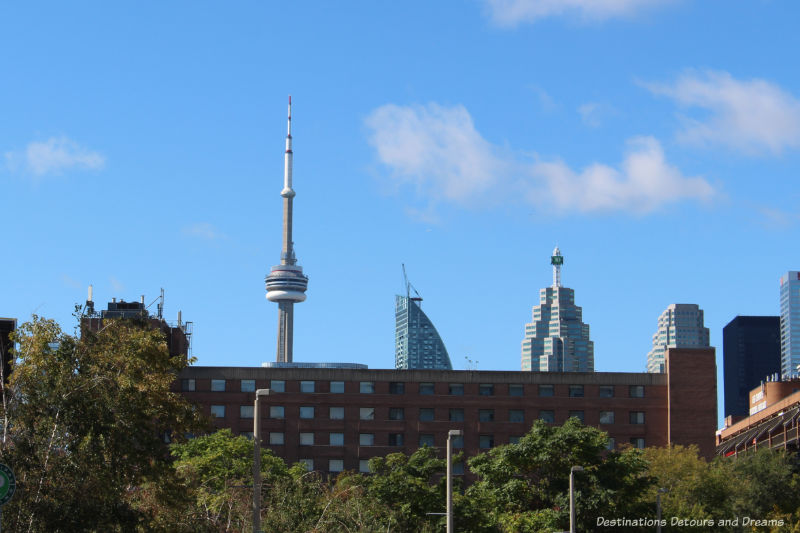
Never miss a story. Sign up for Destinations Detours and Dreams monthly e-newsletter and receive behind-the-scenes information and sneak peaks ahead.
PIN IT
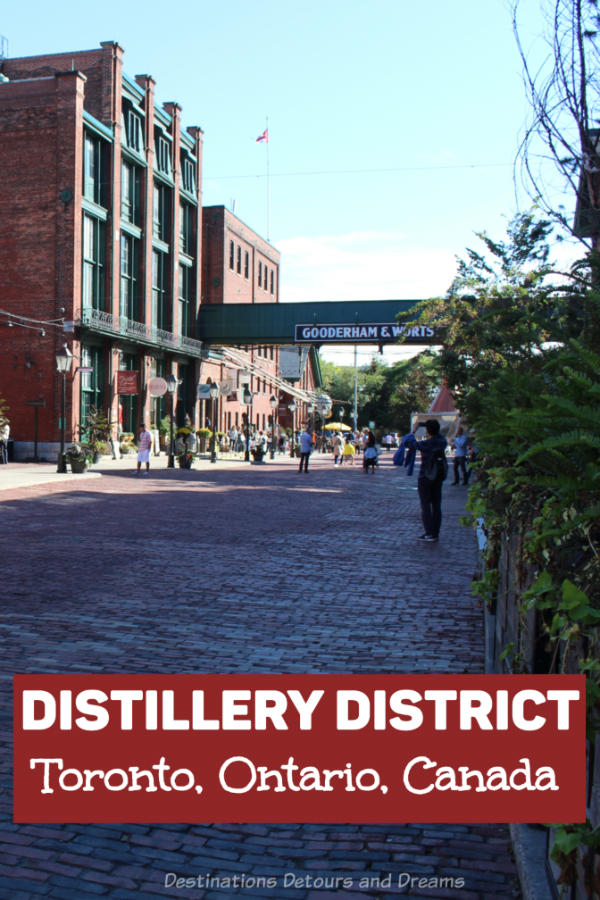

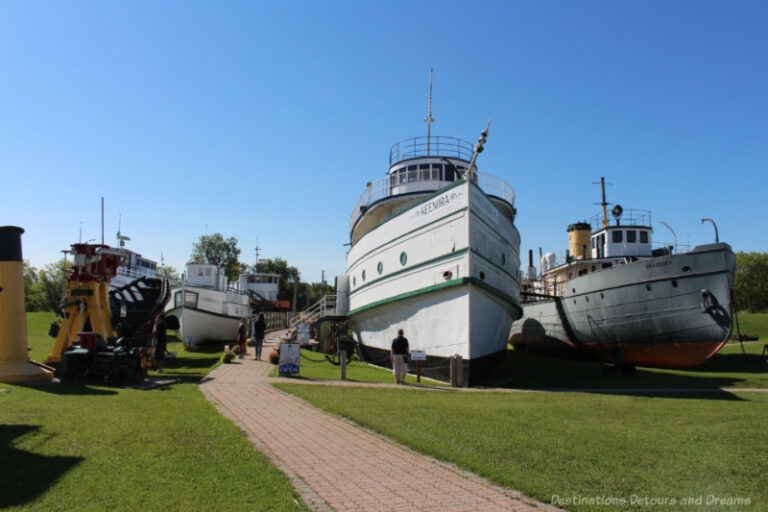
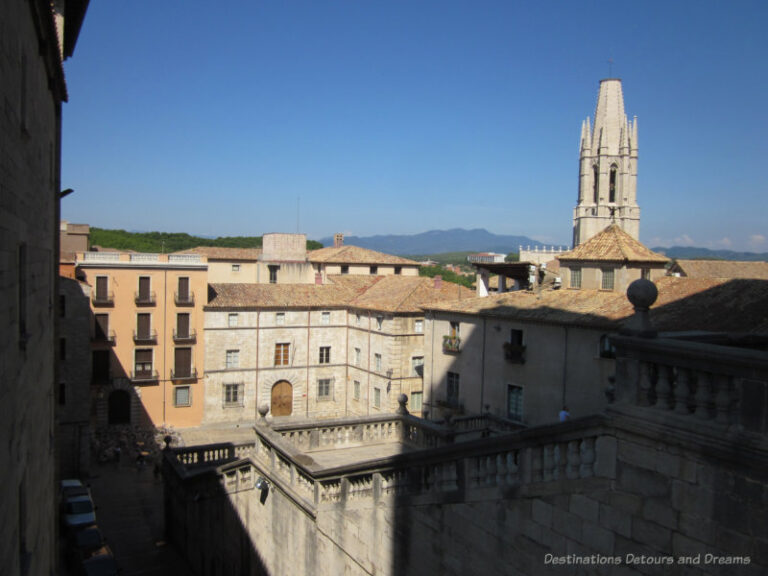
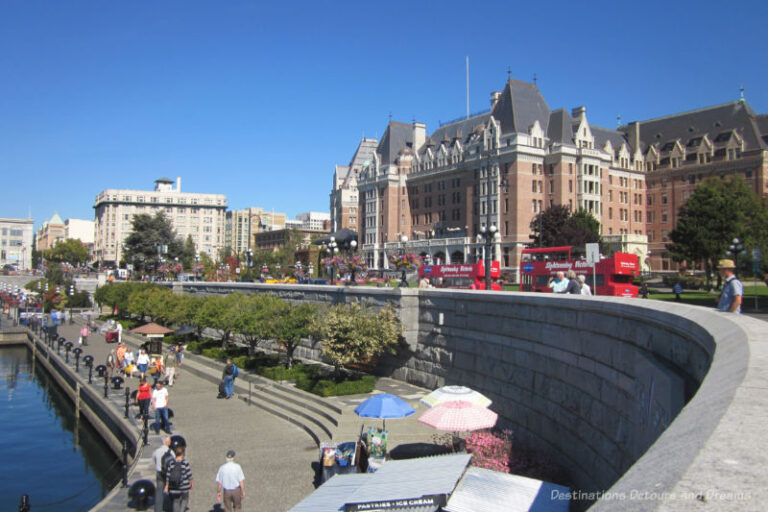
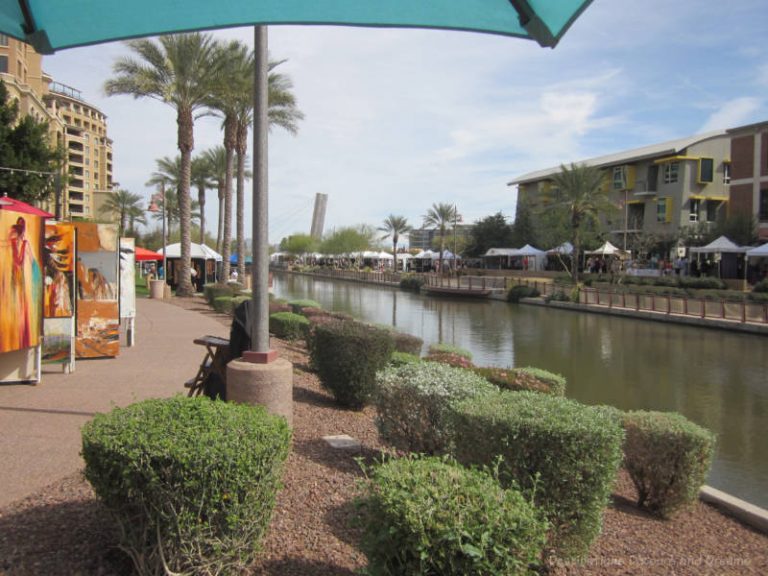
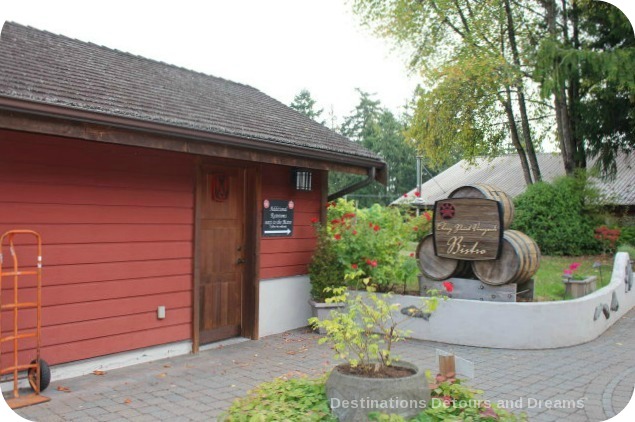

I was in a Toronto last year and went to a Christmas market in an industrial area that looked a lot like this. Maybe it was a different old industrial site. This one looks like it’s been really well maintained.
Ken, I looked it up and this is indeed the area of the Toronto Christmas Market.
I’ve never been to Toronto, but in other cities I’ve seen re-purposing of industrial buildings like they’ve done in the Toronto Distillery District. Even though the buildings were meant for heavy industry, and were probably dirty and smelly and unsafe in all sorts of ways in the 19th century, they have a certain beauty to them that modern industrial buildings don’t have. The red brick, the decorative details, etc. are attractive. And it’s wonderful when they are re-purposed rather than torn down!
Rachel, the buildings were probably dirty, smelly and unsafe in the 19th century, but I agree that the red brick is attractive. I like how theses buildings have been re-purposed in a way which allows for historical information and artifacts to be displayed.
We loved this article on the Toronto Distillery District. This looks like a great place to visit, and your pictures are certainly enticing. Thanks for sharing. Now we need to add this to our travel list.
Jeff & Crystal, I’m glad you enjoyed the article. It is a nice area to walk around and offers lots of dining options.
I love when structures like this are re-purposed for such a unique reason. It looks like a place to spend an entire day eating and wandering around, maybe people watching. Springtime = a trip to Toronto.
Rose Mary, people watching is good here. There is a lot to see and do on a springtime trip to Toronto.
I love the Distillery District, Donna. But for a reason you didn’t mention! It is the home of SOMA chocolate maker. Once of the best in Canada, and definitely a must-see for chocolate lovers who visit Toronto.
Doreen, we walked by the SOMA shop, but didn’t go in. Next time I’m in the District I’ll have to do that.
I also am happy when a city repurposes what might otherwise be a hazardous eyesore. For one thing, the ability to pull off a project like the Distillery District speaks well of the city government and the community. I wish I had known about this area when I was in Toronto for a TBEX conference a few years ago—-a reminder to try to schedule extra days when attending a conference in a vibrant “evolved” city. PS: One of the sculptures you shared reminds me very much of the spider Maman outside the National Gallery of Canada in Ottawa.
Suzanne, the sculptures share some similarities, but the artists are different. It is great when one is able to schedule a few extra days around a conference to see more of the city. It’s something that doesn’t always work with one’s schedule or budget, but I often find there is more that interests me than I can fit into a few days.
I so appreciate it when historic areas are brought back to life. I really enjoyed the history of the area. I would certainly seek out the Toronto Distillery District if I was visiting the city!!
Marilyn, the history makes the place even more interesting. I like that there are signs and displays throughout the site showcasing bits of that history.
Oh it has been ‘forever’ since we were last in Toronto and posts like this make me wonder why we haven’t been back again! Love the restoration of the Distillery District!
Jackie, it’s been a long time since I visited Toronto and toured its many sites of interest. This was the only spot I made it to on my latest visit. I had limited time to explore and chose to visit this site because it hadn’t existed in the days when I visited Toronto more frequently.
I loved reading the history behind this area of Toronto and learning more about this national historic site. The names, Gooderham and Worts sound so old-fashioned and the company name is certainly not one that easily rolls off the tongue! Of particular interest was the fact that Canada had its own years of prohibition laws and repealed them before the US enacted its own laws. (Obviously not learning the lesson that this set of highly unpopular laws was destined for failure.) The rehabbing/restoration of the The Distillery Historic District has been done beautifully. I’d love to see this area! Anita
Anita, the restoration and re-purposing has been done well. Although I knew that Canada’s Prohibition was earlier and shorter than in the U.S., I hadn’t realized until digging into the history of this area that there was such a variation in end dates among provinces.